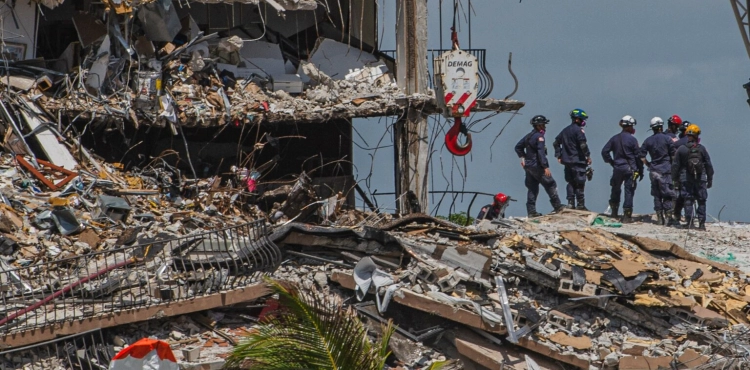At least 60 people died in a building collapse in Surfside, Florida, on June 24, according to local authorities, two weeks after the disaster.
The announcement came a day after aid agencies decided to stop searching for survivors, while 80 people are still missing.
With the exception of the rescue of a teenager in the first hours after the disaster, no survivors were found among the ruins of the 12-storey building.
But the mayor of the small city of six thousand people, Charles Burkett, said Thursday, "We are still praying for a miracle," stressing that he "has not given up hope."
On the fifteenth day of the search operations, the relief crews observed a minute of silence at 1.20 am, the time of the disaster.
"The work continues at the pace necessary," said Daniela Levine Cava, mayor of Miami-Dade, which includes Miami and Surfside.
"We are working 24 hours a day to find the victims" and to enable families to mourn as quickly as possible, she added.
Police and forensic experts were tasked with identifying the owners of the bodies and human organs in order to notify the families of the victims.
Levine stressed that rabbis are coordinating with the police to retrieve the bodies of the victims in line with religious rituals, knowing that Silverside has a large Jewish community.
Relief teams are working on sorting found personal belongings, identification documents, photo albums, educational certificates, jewelry, personal wallets, mobile phones, tablets and weapons.
Levine called on the relatives of the victims to "report the lost items, and we will work in the coming weeks or months so that the families can recover them."
At least 124 tons of rubble were removed from the Champlain Towers South building, which partially collapsed in a disaster whose full cause is not yet clear, knowing that parts of the building´s structure appeared damaged.
And on Sunday evening, the rest of the building was demolished because the parts that were still standing were dangerous, which enabled relief teams to reach sections that were previously inaccessible to all.












